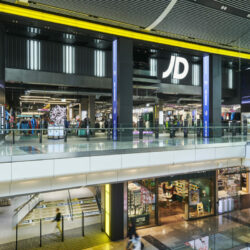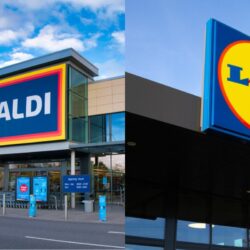Many have been bemoaning the death of the fabled British High Street due to the relentless rise of internet behemoths such as Amazon and the general popularity of ecommerce. And while only a fool would ignore the customer benefits of online shopping, there are plenty of reasons to be cheerful about bricks and mortar stores, as Gareth Poppleton, Managing Director of Retail Merchant Services, explains.
Consumer behaviour has changed dramatically over the last 20 years. The retail industry is currently reminiscing about the first ecommerce transaction, which was a Sting CD purchased way back in 1994. Since then, online shopping has changed the lives of both retailers and consumers; we‘re now at a point where shoppers, armed with smartphones, tablets and the internet, demand products availability at a time and a place that suits them.
In light of this cross-channel activity, the government has sought to inject new life into the High Street – whether it be the Portas pilot scheme or indeed the recent appointment of Penny Mordaunt as High Streets Minister, who has fronted the Great British High Street competition.
It is important, though, that such initiatives are not a flash in the pan. For me success of the High Street is about proposition – if you have something customers want, presented in an appealing way and enable shoppers to make purchases in a manner of their choice, then much of the battle is won.
A rewarding experience:
Your customers could have made a lot of effort to come to your shop. They have paid for public transport, walked, or negotiated busy High Street parking – all things that they wouldn‘t have had to do with online shopping. These customers are more likely to make this effort if they know that you have the product they are looking for at the right price and in stock. To ensure this, keep your customers informed with a well updated website and use social media to answer any customer enquiries. You could also create a pre-order facility so they won‘t be disappointed.
Work together with other local businesses to try to create events that will draw customers into your area. This could mean having taster evenings, discount nights or entertainment. If you sell clothes, have a charity fashion show. If you sell food products, run a cookery demonstration. Give out samples and create a friendly atmosphere that will make people want to come back again and again.
And to support such propositions, consumers need to be able to pay for items however they choose, which increasingly means by card. Nothing is more frustrating than finding something you like but not being able to pay for it if the merchant only takes cash.
The rise of card payments:
A recent survey revealed that only £17.99 out of every £100 spent in the UK comes from cash – £3.03 less than in 2013 – while the British Retail Consortium (BRC) recently reported that the average spend per customer increases if they are paying by card.
What these statistics tell us is that card payments are becoming both more trusted and more suited to consumer buying habits, and therefore the number of card transactions will continue to increase. Retailers without card payment solutions will lose out on important trading opportunities.
Though the UK is unlikely to become cash-free in the near future, offering customers the capacity to pay with coins, notes or cards gives them the freedom to settle their bill in the most convenient manner. That way, their experience of a product or service is positive, which ultimately means they are more likely to engage with you again and become an ever-important loyal customer.
By embracing this brave new world, there is scope for the traditional High Street to integrate with multichannel elements such as ecommerce and secure its place in the hearts – and wallets – of British consumers.

















